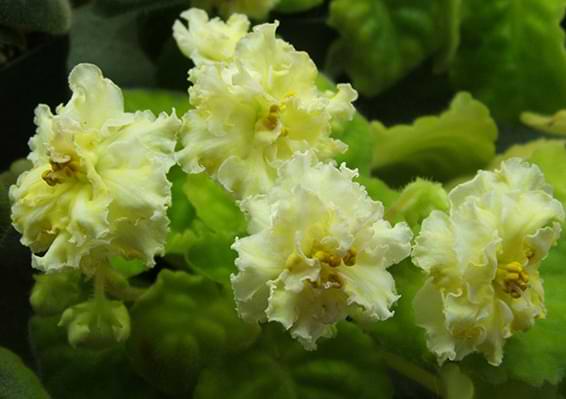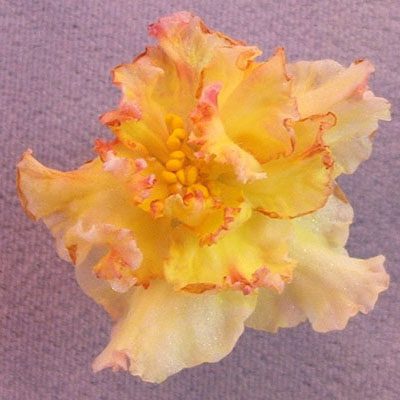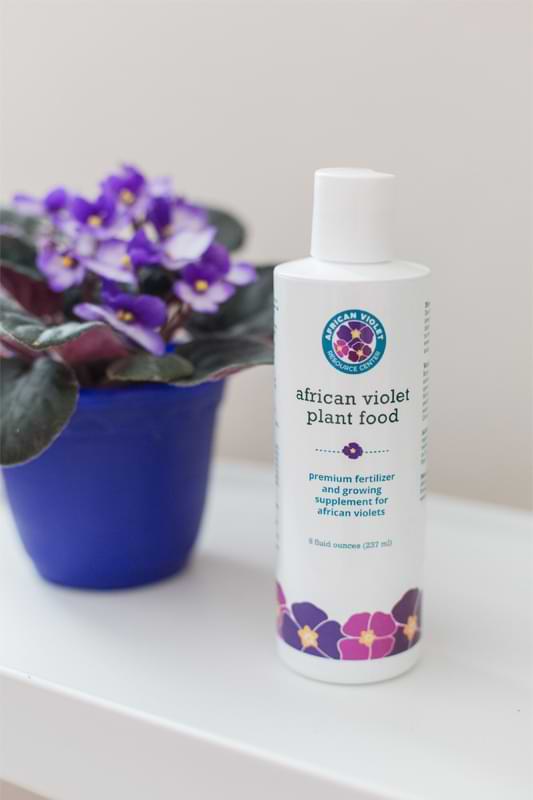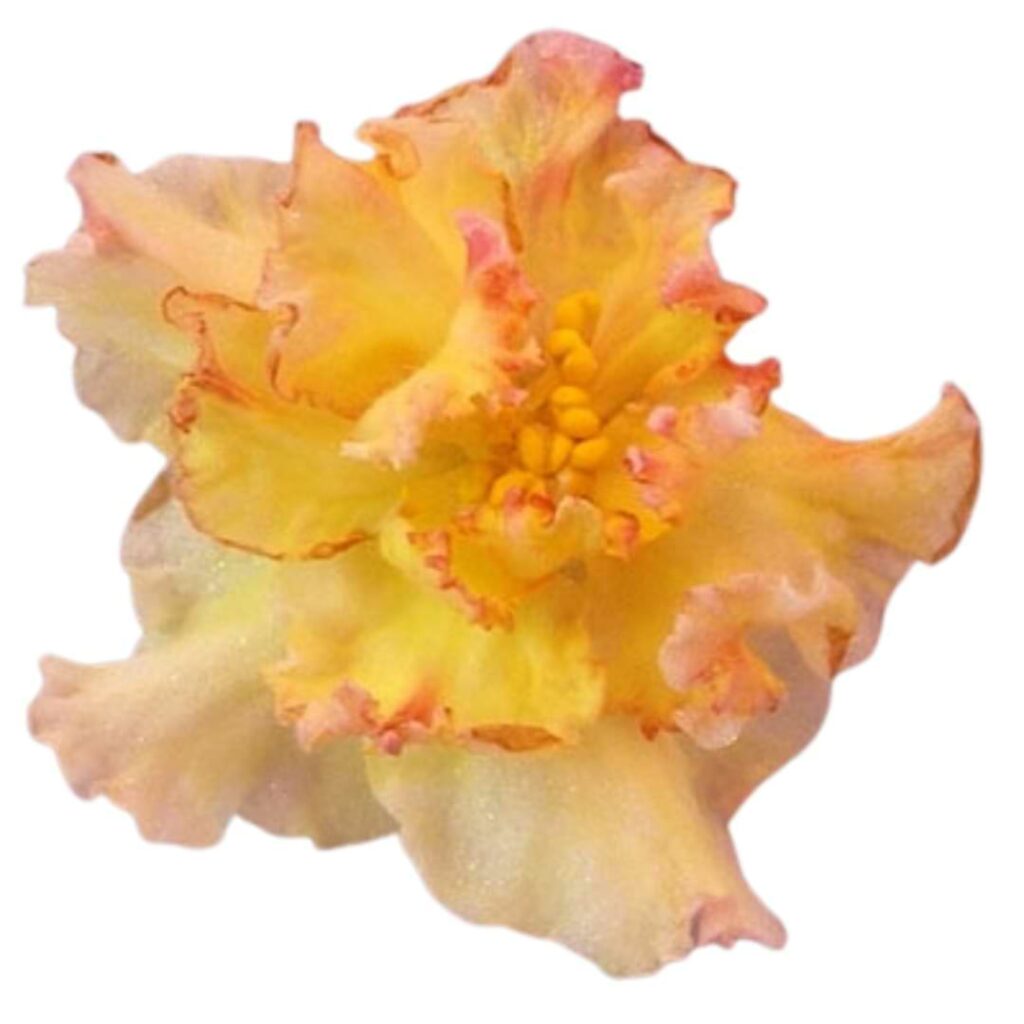Yellow African Violets can brighten up any space. As one of the happiest colors, it’s no wonder yellow African Violets are growing so quickly in popularity. Here are 3 yellow African Violets you can choose from if you’re looking to add a little “sunshine” in your home.
Yellow is not actually a naturally occurring color in the African Violet species, but avid African Violet cultivators have developed several yellow African Violet varieties for everyone to enjoy, ranging from full-yellow flowers to yellow mixed with other colors in the flower head. African Violets get their colors from anthocyanins, which are the pigments that give the flowers their color. Yellow is not a part of the anthocyanins base, meaning an African Violet can not naturally be yellow.
Because this color isn’t naturally occurring in the African Violet genus, there aren’t very many of them, and they can be rather difficult to find. Luckily, we’ve found a few varieties of yellow African Violets for you to marvel at!
3 Types of Yellow African Violets


Mellow Yellow
This stunning yellow African Violet has beautiful double-bloomed flowers that deepen in color moving to the inside of the flower. The flowers are fringed on the ends, making them stand out even more. The leaves of this violet are a medium-green color with serrated edges. This is a standard-sized African Violet, growing to be 8-12 inches in height and spread.


Sunkissed Rose
The sunkissed rose is a beautiful variety that will remind you of those warm summer mornings as the sun rises up above the horizon. The flowers on this violet are also double-bloomed, and the color changes from a medium-yellow in the center of the bloom to a light yellow as the color moves out, and finally a pink outline that almost looks orange-red. This is also a standard sized African Violet, and will have any guest in your home asking about it.


LE Golden Lily
This beautiful AV variety may have you fooled, but it certainly is an African Violet. The blooms are very fringed, and nearly double in on themselves, making the double bloom of this flower look even more full and stunning. The flower is mostly the same shade of yellow, with only slightly darker variations throughout. Some blooms may even have a pinkish blush to them.
Yellow African Violets Growing Guide
Yellow African violets are a beautiful addition to any indoor garden. They are not only easy to care for but also produce stunning yellow flowers that brighten up the room. Most African Violets have similar growing patterns and requirements to thrive, and there is typically only minimal variation in this sense. This is great, because it means if you can learn how to care for and grow one type of yellow African Violet, you can basically care for almost any other African Violet!
Height and Spread
Height and spread can vary depending on the specific type of African violet, but generally speaking, these plants tend to be small and compact in size.
Most yellow African violets are standard sized violets, growing up to 12 inches tall with a similar spread of around 12 inches. However, there are some varieties that only grow to be 6-8 inches in both height and spread, and others that can grow up to 18 inches or more!
It’s important to note that the size of your plant may also depend on how you care for it. Proper watering, fertilization, and pruning techniques can all contribute to a healthy growth rate.
No matter what size variety you choose, yellow African violets make great additions to any indoor garden due to their manageable size and vibrant blooms.
Seasonality and Lifespan
Yellow African Violets grow indoors all year round. However, they may go through some semi-dormant periods if you tend to keep your house cooler in certain months.
African violets do not have a particular flowering season but will bloom continuously throughout the year in ideal conditions. With proper care, they can live for several years. The average lifespan of an African violet is around five years with proper care, but some may live up to ten or more years!
Blooms
African violets are widely known for their gorgeous blooms, and yellow African violets are no exception. These plants have stunning flowers that come in various shades of yellow from pale lemon to bright sunshine.
The blossoms of these plants can be either single or double-petaled, with some cultivars having frilled edges or ruffled petals. The size of the flowers also varies greatly, ranging from tiny miniatures to larger standard sizes up to 3 inches across.
One fascinating characteristic of African violet blooms is that they typically don’t last very long – usually only a week or two at most. However, the plant will produce numerous buds at once and continue blooming throughout its growing season.
It’s worth noting that proper care is crucial if you want your yellow African violets to bloom profusely. Ensure your plant gets sufficient light but avoid direct sunlight as it can damage the delicate petals. Keep the soil moist but not soggy and fertilize regularly during active growth periods. Additionally, your African Violet won’t bloom if it doesn’t get at least 8 hours of darkness, so make sure it gets enough “rest,” and your AV will happily bloom year-round.
How to Care For Yellow African Violets
Yellow African violets are delicate plants that require proper care to thrive, but when properly cared for, they can live for several years! Here are some tips on how to take care of your yellow African Violets:
Lighting: Yellow African violets need bright, indirect light. Too much direct sunlight can damage the leaves and flowers. Lighting plays a significant role in determining the lifespan of your yellow African violet. Low-light conditions can cause stretching or leggy growth while too much light can lead to leaf scorching or wilting.
Aim to place your AV in a south-facing window. You can always place it near an east-facing window to get some morning light, but if your only option is a west-facing window, place it far enough away from the window that it doesn’t get scorched in the hot afternoon sun.
Watering: Water your plant when the topsoil feels dry to the touch. Overwatering can lead to root rot, so make sure not to let your plant sit in water for too long. To ensure that your yellow African Violet thrives throughout its life, maintain consistent watering habits and avoid overwatering, which leads to root rot. Use an African Violet-specific soil, as it is formulated to give your plant the perfect mixture of nutrients, along with the right level of moisture retention.
Humidity: These plants prefer humid environments, so consider placing a humidity tray near them or using a humidifier. You can also increase the humidity in your plant’s immediate area by placing more than one plant together. This helps to mimic the natural environment that indoor houseplants are actually used to growing in.
Temperature: Keep your yellow African violet in a warm room with temperatures between 65-75°F. During the winter months, it’s crucial to keep your yellow African Violet away from cold drafts, and you should always keep your plant out of direct sunlight to avoid a significant increase or decrease in temperature.


Fertilizer: Use a balanced plant food specifically designed for African violets every time you water your plant. This plant food gives your AV a smaller amount of nutrients over an extended period of time, preventing issues like fertilizer burn and giving your plant more opportunities to absorb the nutrients it needs to thrive.
Pruning: Regularly remove dead or damaged leaves and spent blooms with pruning shears. This ensures that your plant not only has plenty of room to continue growing and blooming, but also that any diseases or pests don’t find the spent blooms or foliage and begin to affect the rest of your plant.
Are Yellow Violets Toxic
The good news is that yellow African violets are non-toxic to humans and animals. So even if your furry friend decides to take a nibble out of the leaves or flowers, there’s no need to worry. That’s not to say they should be allowed to eat your plants, as that can cause a hard-to-break habit, but if it happens by accident, there’s no harm to worry about.
However, it’s always a good idea to practice caution when handling any plant material. Some people may be allergic or sensitive to certain compounds found in plants that can cause skin irritation or respiratory problems. Even if you have no known allergies, it’s important not to over-handle your plant, as this could cause stress to your plant.
In addition, it’s important not to confuse yellow African violets with other plants that might look similar but could be toxic instead. Always do thorough research on any new houseplants you plan on bringing into your home.
FAQs Yellow Flowered African Violets
How many types of African violets are there?
African violets are a widely cultivated houseplant and come in many varieties. In fact, there are over 20,000 registered African violet cultivars! There’s an African Violet out there for every home, design style, and personality!
How do I identify my African violet?
Identifying an African Violet is fairly simple. If the plant isn’t blooming yet, take a look at the foliage and take note of any variegation, how the edge of the leaf looks, and how deep of a green the leaves are, along with if there are any color variations in the leaves themselves. This alone will give you a good starting point to identify your African Violet.
Next, if your plant is in bloom, take a picture of the blooms as closely and clearly as you can. Take note of the color of the blooms, if they are single bloomed, semi-double bloomed, or double bloomed, and if there is variegation in the blooms. Some varieties have an outline of the blooms, take note of that also. With all of this information, you’ll be able to easily identify which African Violet you have.
If you can’t identify it still, posting to an African Violet forum or group will help get you the answer you’re looking for.
Join the African Violet Club!
Whether you’re just starting out or are a seasoned grower, African Violet Resource Center has everything you need to help your plant grow vibrant and strong. Explore our other articles, visit our online shop, and connect with other houseplant lovers in our Facebook group to learn everything you need to know about this rewarding hobby!





